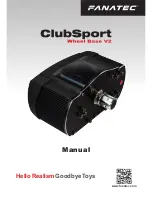
Cause
Possible Solutions
Frequency reference value is too low or the drive does
not accept the value entered.
Enter a value that is above the minimum output frequency determined by E1-09.
The sequence Start/Stop sequence is set up
incorrectly.
• If the drive is supposed to be set up for a 2-wire sequence, then ensure parameters H1-03 through
H1-07 are not set to 0.
• If the drive is supposed to be set up for a 3-wire sequence, then one of the parameters H1-03
through H1-07 must be set to 0. Terminal S1 will become the Start, terminal S2 will become the
Stop input.
n
Motor Rotates in the Opposite Direction from the Run Command
Cause
Possible Solutions
Phase wiring between the drive and motor is incorrect.
• Check the motor wiring.
• Switch two motor cables (U, V, and W) to reverse motor direction.
• Connect drive output terminals U/T1, V/T2, and W/T3 in the right order to match motor
terminals U, V, and W.
• Change the setting of parameter b1-14.
The forward direction for the motor is set up incorrectly.
Typically, forward is designated as being counterclockwise when looking from the motor shaft
(see figure below).
1
2
1.
Forward Rotating Motor (looking down the motor shaft)
2.
Motor Shaft
The motor is running at almost 0 Hz and the Speed
Search estimated the speed to be in the opposite
direction.
• Disable bi-directional search (b3-14 = 0) so that Speed Search is performed only in the
specified direction.
Note:
Check the motor specifications for the forward and reverse directions. The motor specifications will vary depending on the manufacturer
of the motor.
n
Motor Rotates in One Direction Only
Cause
Possible Solutions
The drive prohibits reverse rotation.
• Check parameter b1-04.
• Set parameter b1-04 to 0 to allow the motor to rotate in reverse.
A Reverse run signal has not been entered, although
3-Wire sequence is selected.
• Make sure that one of the input terminals S3 to S7 used for the 3-Wire sequence has been set
for reverse.
u
Motor is Too Hot
Cause
Possible Solutions
The load is too heavy.
If the load is too heavy for the motor, the motor will overheat as it exceeds its rated torque value
for an extended period of time.
Keep in mind that the motor also has a short-term overload rating in addition to the possible
solutions provided below:
• Reduce the load.
• Increase the acceleration and deceleration times.
• Check the values set for the motor protection (L1-01, L1-02) as well as the motor rated current
(E2-01).
• Increase motor capacity.
The air around the motor is too hot.
• Check the ambient temperature.
• Cool the area until it is within the specified temperature range.
Insufficient voltage insulation between motor phases.
When the motor cable is long, high voltage surges occur between the motor coils and drive
switching.
Normally, surges can reach up to three times the drive input power supply voltage.
• Use a motor with a voltage tolerance higher than the max voltage surge.
• Use an inverter-duty motor rated for use with AC drives when using the motor on drives rated
higher than 200 V class.
• Install an AC reactor on the output side of the drive. The carrier frequency should be set to 2
kHz when installing an AC reactor.
5.10 Troubleshooting without Fault Display
YASKAWA ELECTRIC TOEP C710616 45F YASKAWA AC Drive – Z1000 User Manual
239
5
Troubleshooting
Summary of Contents for Z1000 CIMR-ZU*A Series
Page 399: ......
















































